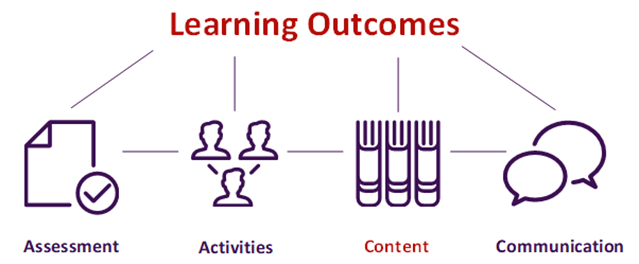Overview
- As with other elements of a learning experience, content must be developed in line with learning outcomes.
- Building online content for a new blended unit takes time.
- Those who have used blended learning have found that although there is initial time investment, it pays off in future.
- Some principles may help with the development of more sustainable content.
On this page
Using video to develop content
Using audio to develop content
Promoting active student engagement
Developing sustainable content

Using video to develop content
Videos have the potential to allow us to set the context, explain complex material, record a scenario and importantly embed teacher presence in a unit. Using video to develop content has both advantages and disadvantages that should be considered.
- Advantages:
- Provide anywhere, anytime learning, flexibility
- Can be paused and re-watched
- Provide teacher presence
- Videos related to assessments can be watched repeatedly
- Can create efficiencies in the long term
- Can maximise active use of face-to-face time
- Disadvantages:
- Can be a passive experience if not supported with activities
- Time consuming to create
For more information on developing video content for blended learning see the resources under Educational Technologies , including Creating Video Resources and LEO Guides.
Using audio to develop content
Although many people lean towards producing video resources, audio files can have benefits over videos.
Some of these include -
- Convenience - they are easily downloaded to a portable device for 'anywhere, anytime' listening.
- Easier to make than videos.
- Uses less bandwidth.
- Allows you to embed a conversational dialogue with the student.
- Useful for those who don't want to have their face on screen.
- Students can listen in public spaces.
Promoting active student engagement
Watching a video or listening to audio by itself is a passive experience and has the potential to lead to shallow learning. To create an active experience that encourages depth of thinking always pair your resource with a related activity. This activity should promote higher level thinking and engagement.
Note - ECHO360 lecture capture is primarily designed to give students flexibility in attendance at face-to-face lectures. As such these recordings capture the entire length of a lecture. In a blended model, there is opportunity to develop shorter recordings which meet the recommended time parameters and maximise student engagement.
The following things should be considered when developing resources to maximise engagement –
- Shorter recordings are best
- For video 6-9 minutes is optimal to maximise student engagement
- For audio 15 minutes is considered optimal
- Using a consistent structure in your unit will reduce cognitive load and aid clarity for students.
- Describe how the unit is structured
- Provide learners with a clear purpose for tasks
- Use consistent styling
- Smaller file sizes are easier to upload
- Shorter recordings support student flexibility in how they break up their study time
- Updating shorter recordings is easier
Developing sustainable content
When creating recorded content consider its sustainability. The last thing you want to do is to re-record because one of your comments is out-of-date.
Avoid things that are likely to need regular update, such as -
- Mentioning dates, year, semester both in the recording and in the file name
- Talking about specific assessments (you could create an assessment video)
- Unit name, module or week number
- For content that unavoidably regularly changes (for example, legislation), consider ways of minimising the need to re-record. A strategy would be recording a video about general concepts but having an easily editable document for specifics.
- When using web-links for activities try to draw on sources that will have some longevity. So, you don't need to update URLs and change activities because the sources have disappeared.


